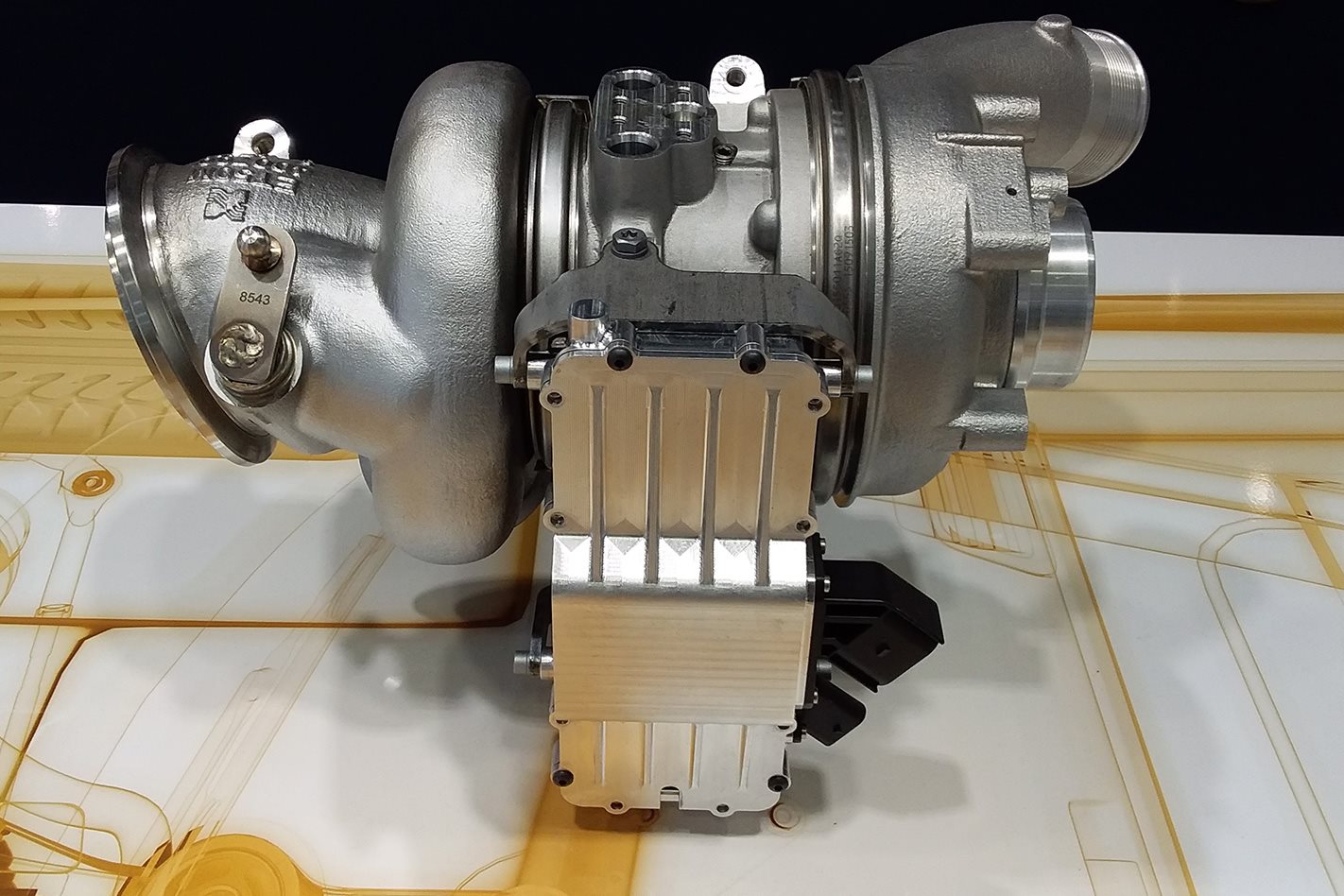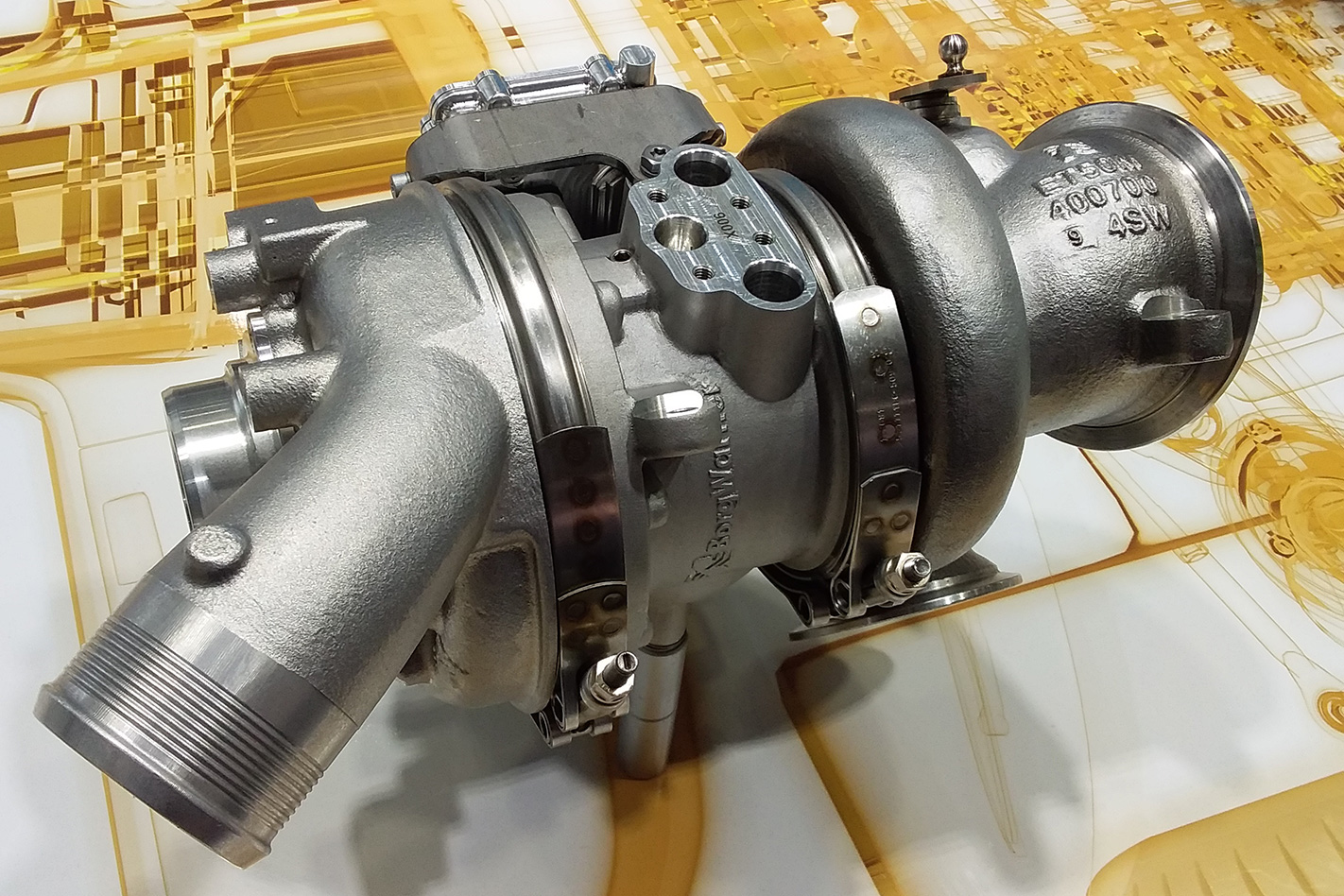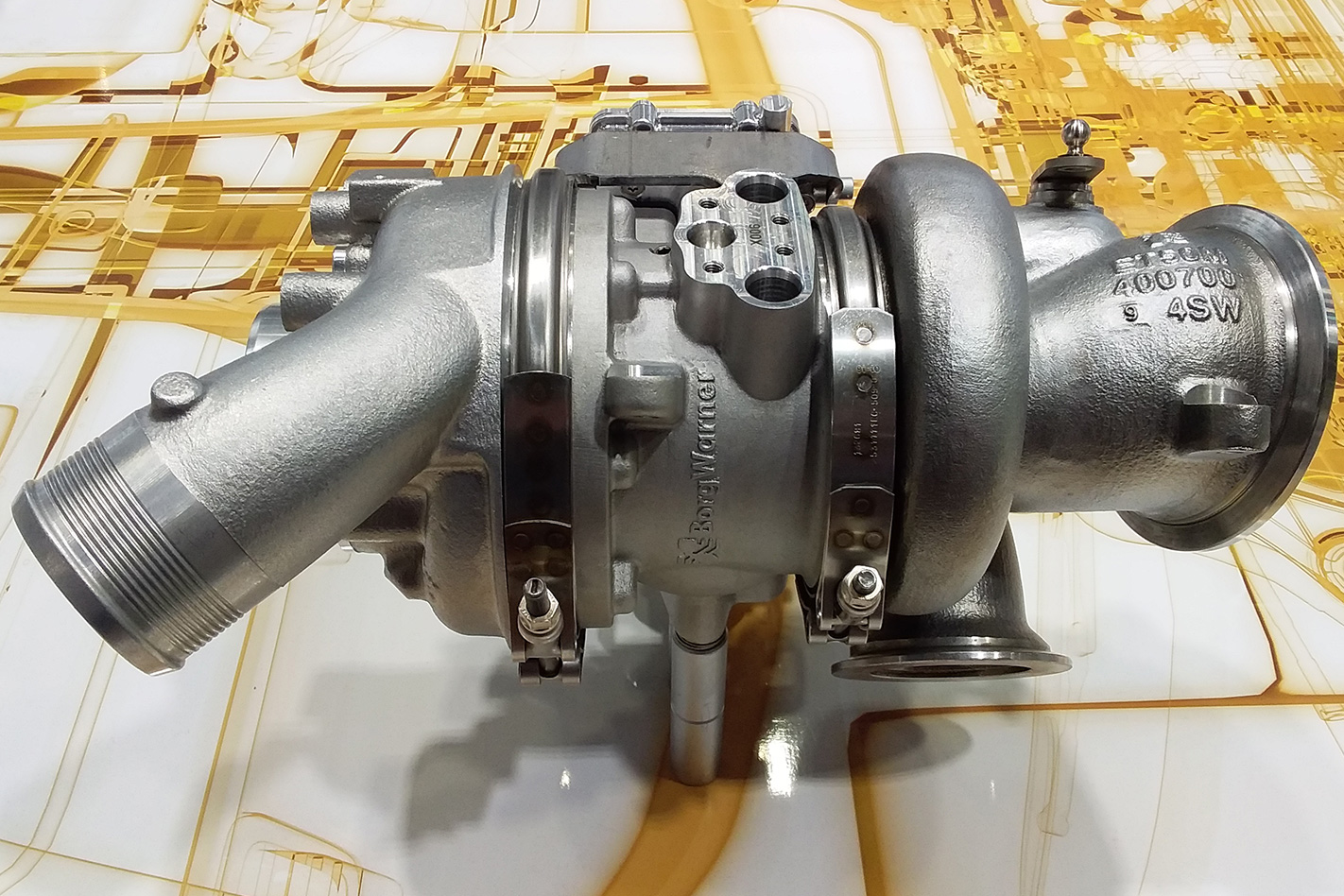
Global automotive component giant BorgWarner is partnering with an, as yet, unnamed “supercar manufacturer” to kickstart an electric turbo revolution in 2022.
Outside Formula 1 racing, electrically assisted turbochargers are still an emerging science and the first manufacturers are yet to throw their hats into the ring and adopt the technology. But expect all the key brands to flock to the technology in the coming years, lured by the potential to boost power and efficiency whilst banishing undesirable turbo lag too.

The drivetrain specialist is not revealing exactly which high-end sportscar brand it is working with to debut its new eTurbo trickery, but the wise money would be on Ferrari, which filed a patent for an electric turbo last year.
Significantly though, BorgWarner did confirm the version that will feature on the mysterious car is not 48-volt but an example of its 400-volt models, which means the car it is bolted to is a serious plug-in hybrid, not a mild-hybrid with a 48-volt sub-system.
If confirmed as the partner, it will be the second plug-in from Ferrari, following in the tyre tracks of the SF90 Stradale.
BorgWarner’s eTurbo is a sophisticated evolution of the traditional turbocharger with a high-efficiency electric motor coupled to the turbo’s main spindle. When the engine is not producing sufficient exhaust gasses for the turbo to reach its boost ‘threshold’ the electric motor instantly compensates, eliminating lag.

It should not be confused with electric compressor technology as showcased by Audi for its SQ7. In this case a high-power motor drives a centrifugal compressor to provide boost at low rpm, but has no exhaust-driven turbine and switches off at higher engine speeds allowing separate conventional turbos to take over. Since it has no turbine it is not called an electric turbo.
BorgWarner’s unit however, incorporates a high-power motor into a complete turbo, removing the need for a separate e-compressor component, but there are other advantages too.
The electric motor can also double as a generator to produce electricity from energy in the exhaust gasses at low engine loads when the exhaust is not needed to drive the turbo’s compressor. This tops up the battery and increases the vehicle’s range.
And the same braking effect of the generator on the rotating compressor allows the elimination of separate boost control methods such as complex variable vanes and relatively primitive waste gates.
During cold-starting and warm up, exhaust gasses can completely bypass the eTurbo allowing the emissions control systems such as catalytic converter and particulate filters to warm up to ‘light-off’ temperature as fast as possible, reducing emissions. While gasses are bypassed, the eTurbo produces boost using electrical power alone.
But at its core, the BorgWarner eTurbo is a conventional turbo meaning it can function exactly as a normal turbocharger if the electrical side should fail.
Four models will be on offer as soon as the company makes the eTurbo widely available ranging from the smallest eB40 up to a sizeable eB80 as well as commercial vehicle versions.
The 48-volt model uses up to a 17kW motor while the full fat 400 and 800-volt versions can pump out up to 34kW.
Arch rival Garrett is also developing its own electrically assisted turbo and will no doubt have already engaged its first partners to bring the technology to a showroom near you and the race to be the first eTurbo boosted production car is on.




